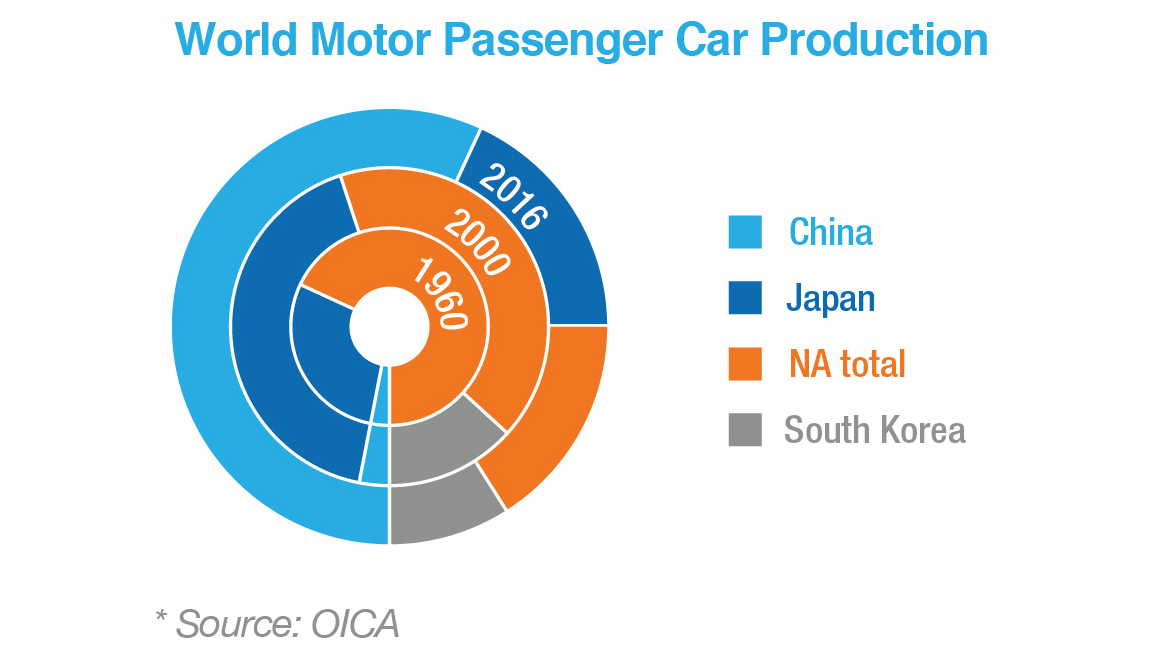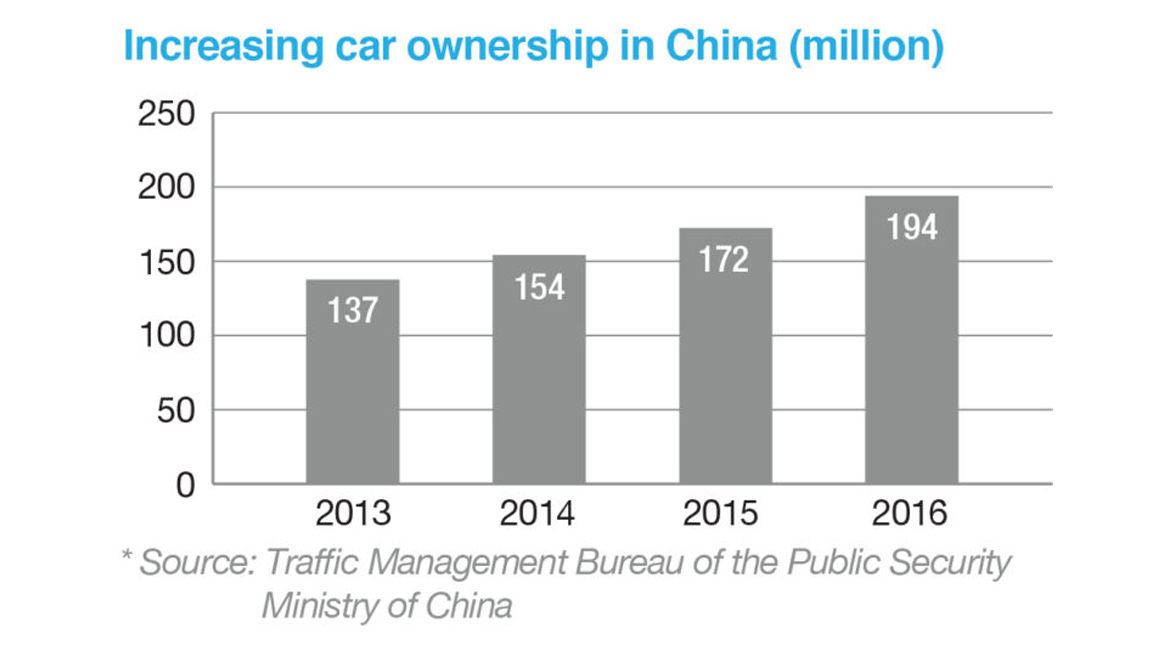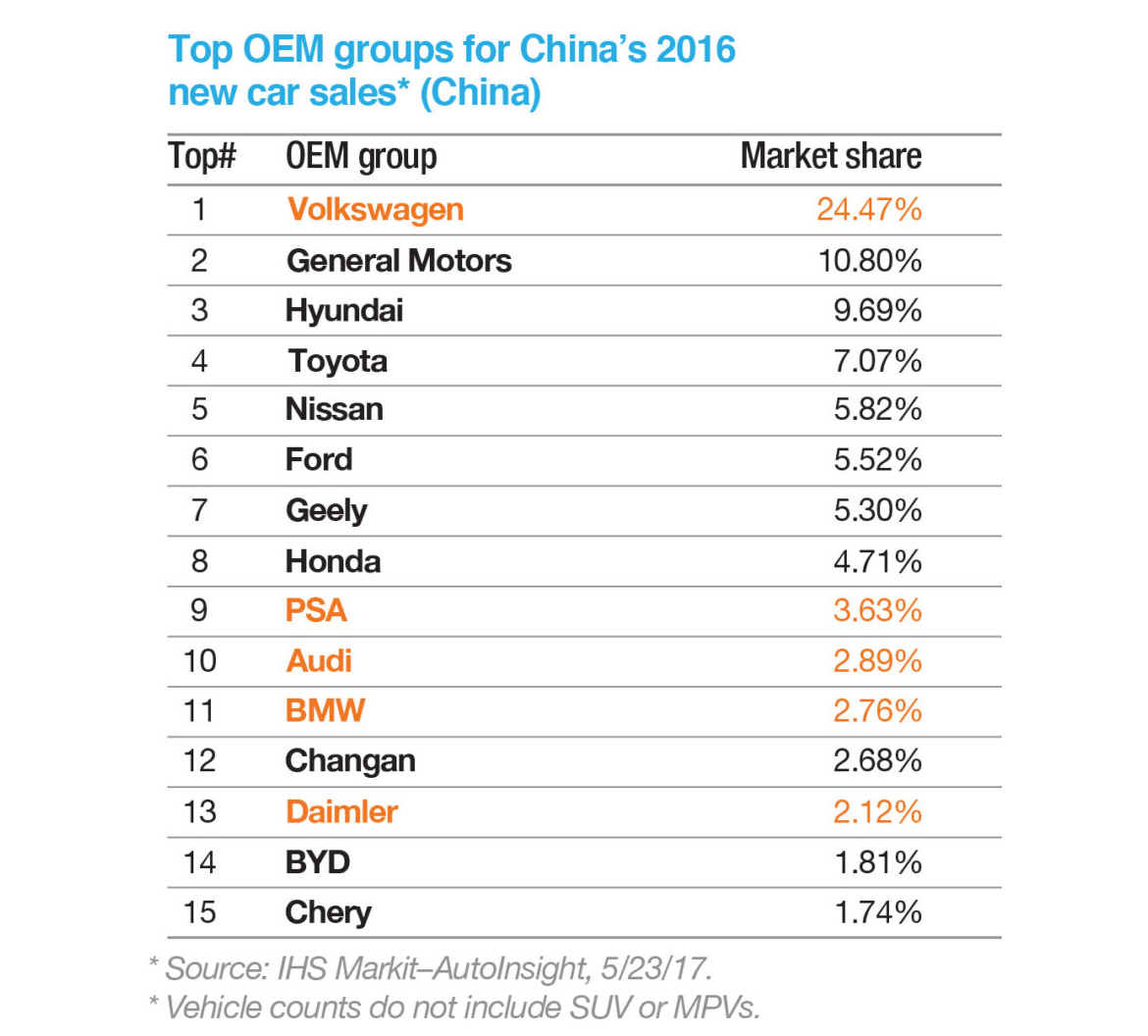The emergence and transformation of Asian countries as key players not only in the global economy, but also as automotive manufacturers and consumers of passenger vehicles has been nothing short of spectacular over the past 50 years. But even this has been eclipsed by the dramatic growth of China into a world automotive ‘super-power’ in just 15 years.
In 2016, China produced over 24 million passenger cars which represents almost 34% of global passenger production. To put this into perspective, according to figures from international motor vehicle manufacturers body OICA, the total number of vehicles produced by China in 1960 was less than 25,000. By the start of the new millennium, this figure had increased to around 2.1 million, of which 604,000 were passenger cars.

Equally interesting and potentially more important from a lubricant standpoint, is that in 2016 around 27.5 million new cars were registered in China, taking vehicle ownership to 194 million, according to figures from the country’s Ministry of Public Security.

For lubricant manufacturers, the rapid growth of such a large new market is a significant sales opportunity, but it can also bring some substantial issues, such as ensuring the lubricant technology meets the needs of the vehicles on the road in China.
With approximately 36% of all cars sold in China coming from European manufacturers, this immediately places demands on owners, garages and oil manufacturers to ensure suitable lubricants are not only readily available in the market, but the correct ones are used during servicing to protect against the negative consequences of miss-application and complying with emission legislation.


Vehicles sold by European OEMs in China are designed to comply with European emissions legislation and must be compatible with the European lubricant oil standards. At the heart of lubricant performance standards in Europe is the Association des Constructeurs Européens d'Automobiles, more commonly referred to as ACEA. At regular intervals, ACEA releases a series of performance specifications known as the ACEA Oil Sequences, which enable oil manufacturers to ensure their products are compatible with the latest developments in engine technology.
Of concern is the misapplication of the American Petroleum Institute (API) specification. API specifications are based on the demands of engines designed by North American manufacturers for vehicle that are not fully representative of the duties and performance characteristics of European vehicles, which tend to be designed to run hotter and have a higher power densities.
Since the first ACEA oil sequences were published in 1996, they have been regularly updated to accommodate changes, such as tighter emissions regulations, the addition of after treatment devices, widespread use of turbochargers and the additional stresses caused by increased power densities, to name but a few. As a consequence, service fill lubricants that have been formulated and manufactured to the latest ACEA sequences are the most appropriate to use in European cars.
The latest evolution of ACEA’s oil sequences incorporates a number of amendments including the addition of a completely new ACEA C-5 lubricant category with a more demanding high-temp high-shear (HTHS) specification that reflects the development and application of engine technologies, such as GDI and T-GDI (turbo-gasoline direct injection).

ACEA 2016 has global reach and the lubricant testing procedures it contains acknowledges the increasing presence of European vehicles in China and other non-European markets. Lubrizol’s technical and field test manager for China, Keith Howard, notes that concerns about the current robustness of gasoline direct-injection and turbocharged direct-injection engines is one of the main drivers of the ACEA 2016 sequences. He adds that particulate filters are a key item in ACEA 2016 and expects gasoline particulate filters will appear on direct-injection gasoline engines in the near future.
Lubrizol has extensive global testing and formulating expertise to help oil marketers provide the proper ACEA lubricant formulations for European vehicles in China. This includes considerable fundamental knowledge and industry leading development of low viscosity lubricants, which is a key aspect of ACEA 2016 linked to TGDI engine technologies. With Lubrizol’s knowledge of the complex global market, our customers are confident in our automotive lubricant technology—no matter where in the world they are driving.
To learn more about the ACEA Engine Oil Sequences, visit our ACEA specification page, or contact your Lubrizol representative.









